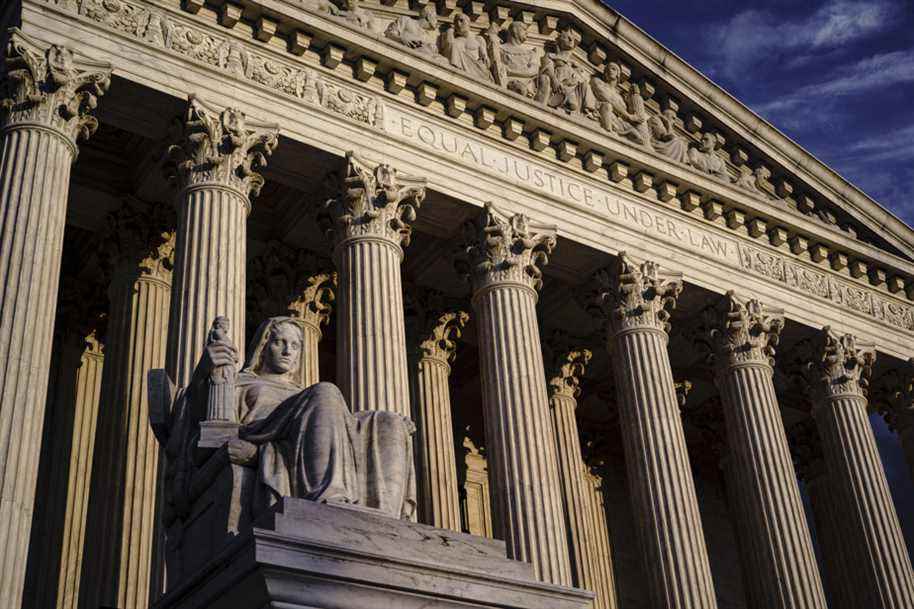(Washington) The United States Supreme Court on Friday inflicted a setback on abortion rights advocates by refusing to block a Texas law that has banned since 1er September for the inhabitants of this vast state to abort after six weeks of pregnancy.
The high court did allow federal courts to intervene against the law, but clinics and doctors who perform abortions in Texas remain under threat of costly lawsuits if they intervene beyond this time limit.
With the ruling, the court’s strong conservative majority signaled that it was unwilling to defend the right to abortion, which it could even curtail in a few months in another case emanating from Mississippi.
Noting that “women’s rights are under attack in several states,” Democratic President Joe Biden said in a statement “very concerned” about the Supreme Court’s decision to leave Texas law in place.
“It’s cruel, unfair, inhuman,” commented Amy Hagstrom Miller, president of the Center for Reproductive Rights, which manages four clinics in this conservative state in the American South: “our teams are desperate, frightened, discouraged” and “Our patients do not understand why they are denied the care they need”.
“BIG WIN,” instead tweeted Texas Attorney General Republican Ken Paxton, who like other abortion opponents was pleased that the law remains in force. “It’s a victory for Texas and the pro-life movement,” said Republican State Senator Ted Cruz.
10,000 dollars
Texas bans abortion, even rape or incest, as soon as the embryo’s heartbeat is noticeable, around six weeks pregnant, which in the United States is four weeks after conception , when most women are still unaware that they are pregnant.
The federal courts have in the past invalidated a dozen comparable laws because they violate the jurisprudence of the Supreme Court: the latter recognized in 1973, in its historic judgment “Roe V. Wade”, and reaffirmed in 1992, the the right of American women to have an abortion as long as the fetus is not viable, that is to say around 22 to 24 weeks of pregnancy.
But Texas has devised an exceptional device: its law entrusts citizens “exclusively” with the task of enforcing this prohibition, by encouraging them to sue in civil proceedings the people and organizations which help women to break it against the promise of 10,000. restitution dollars.
In the absence of an official responsible to whom to order not to apply the law, this mechanism complicates the intervention of the federal justice.
Seized urgently at the time of the entry into force of the text, the Supreme Court, which has six conservative magistrates out of nine, had taken refuge behind these “new questions of procedure” to stay away.
His inaction, seen as a sign of the influence of the three judges appointed by Donald Trump, had been strongly criticized on the left. The legal battle then intensified, forcing the court to reopen the case.
Finally, eight of its members on Friday identified a handful of officials from the state’s health services, responsible for granting permits to doctors and clinics, who could be the target of legal actions.
“Madness”
The majority judgment deals only with technical questions and does not at any time mention the right to abortion.
In a separate text, the head of the Court John Roberts, a moderate conservative, and the three progressive magistrates wanted the courts to quickly block the law “unconstitutional”, “given its sinister and lingering effects”.
“The Court should have put an end to this madness several months ago,” added progressive judge Sonia Sotomayor. “It was wrong then and it is still wrong today”, leaving it in force.
These disagreements between the Nine Wise Men were also noticeable during the review on 1er December, of a Mississippi law that prohibits abortion after 15 weeks of pregnancy.
At the hearing, the Conservative majority seemed ready to use this file to reverse the “Roe v. Wade ”who, almost 50 years later, continues to strongly divide the United States.
If the court, which will render its decision in June, decides to overturn it, half of the 50 American states should, in the more or less short term, ban abortions on their soil.
